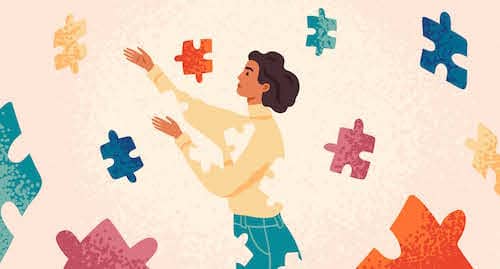January 08, 2020
By Swamy G

Depersonalization (DP) disorder is an incredibly scary and unpleasant mental health issue. As someone who personally struggled with DP for years, I can tell you how bizarre the symptoms were.
It felt as if I was looking at the world from a third-person perspective —like living inside a movie. When I spoke, it was as if the words coming out of my mouth were not mine. When I looked into the mirror, I couldn’t feel a connection to my own reflection. It was as if I was staring at a stranger.
Life with DP can seem devoid of simple pleasures. The love and affection you felt for your kids might suddenly go missing. You start to worry if this will become permanent. You yearn to one day wake up and completely forget this ever happened to you.
For those with DP, unfortunately, you're probably not going to suddenly wake up and find yourself cured overnight. However, you can recover. It just takes time and effort, and most importantly, changes to your understanding of DP and to your life. To make it simple, here was my blueprint to recovery.
Often, when we feel depersonalized, we think we are in danger. And while depersonalization is scary, it is not a threat to your life — it may actually be your body’s way of trying to protect you from one.
The exact cause of depersonalization is not known, but one explanation stems from an atypical function of the body’s autonomic nervous system (ANS), which regulates things like heart rate, hunger and blood flow. High-stress situations activate the body’s sympathetic nervous system (SNS), a part of the ANS, keeping us alert and active. The SNS is responsible for the fight-or-flight reaction to a threat.
In evolutionary terms, if you see a predator in your path, the SNS increases your heart rate, which pumps more blood to provide the energy you need to fight the threat or run away from it.
But for people with DP, extreme stress may not lead to “fight” or “flight.” Instead, this heightened arousal can lead to dissociation, or a disruption in brain functioning, in order to emotionally distance yourself from a perceived life-threatening situation. Your mind shuts down to protect itself from being overwhelmed. However, being in this state makes us feel disconnected from our environment and the people around us.
The experiences associated with depersonalization can be extremely unpleasant, but are ultimately not a threat to your life. Your body-mind system is just doing what it is designed to do: ensure your survival.
When we don't understand the mechanism behind DP, we might try to fight it. But here's the problem: fighting depersonalization may actually sustain it.
When you fight the symptoms of DP, you remain in a state of stress, which can bring about more depersonalization as your mind continues to try to protect itself. Now you are stuck in a loop of stress, depersonalization, more stress, more depersonalization, and so on.
To break this cycle, we must stop fighting it. In fact, we should actually do the opposite: accept and even surrender to these feelings.
You may think that if you don't fight the symptoms, they will take complete hold of you and you'll never have your life back. But that is not how DP works. Acceptance of DP doesn't lead to stress like fighting DP does. Without additional stress, there's no need to dissociate and become depersonalized.
We should aim to lead a balanced life in order to reduce our stress levels as much as possible. A balanced life consists of being active, getting enough rest, eating healthy and following a routine. Do not stay in your room all day because you are feeling depersonalized. To feel normal again, do normal things.
This process may be slow, and you might have setbacks where you feel like you're starting over on your path to recovery. Our body-mind system takes time to recover, and we need to give it all the time it needs.
Healing from DP requires changing our understanding of the disorder; to stop seeing it as an enemy or a threat and instead to accept and ride these feelings out. When we do that, balance can be restored. I wish you well on this journey.
Swamy G is a counselor, coach and writer for A Coach Called Life. He is also the creator of DP No More, an online course that helps people recover from depersonalization and derealization. You can follow him on Twitter: @coachcalledlife.
We’re always accepting submissions to the NAMI Blog! We feature the latest research, stories of recovery, ways to end stigma and strategies for living well with mental illness. Most importantly: We feature your voices.
LEARN MORENAMI HelpLine is available M-F, 10 a.m. – 10 p.m. ET. Call 800-950-6264,
text “NAMI” to 62640, or email. In a crisis, call or text 988 (24/7).